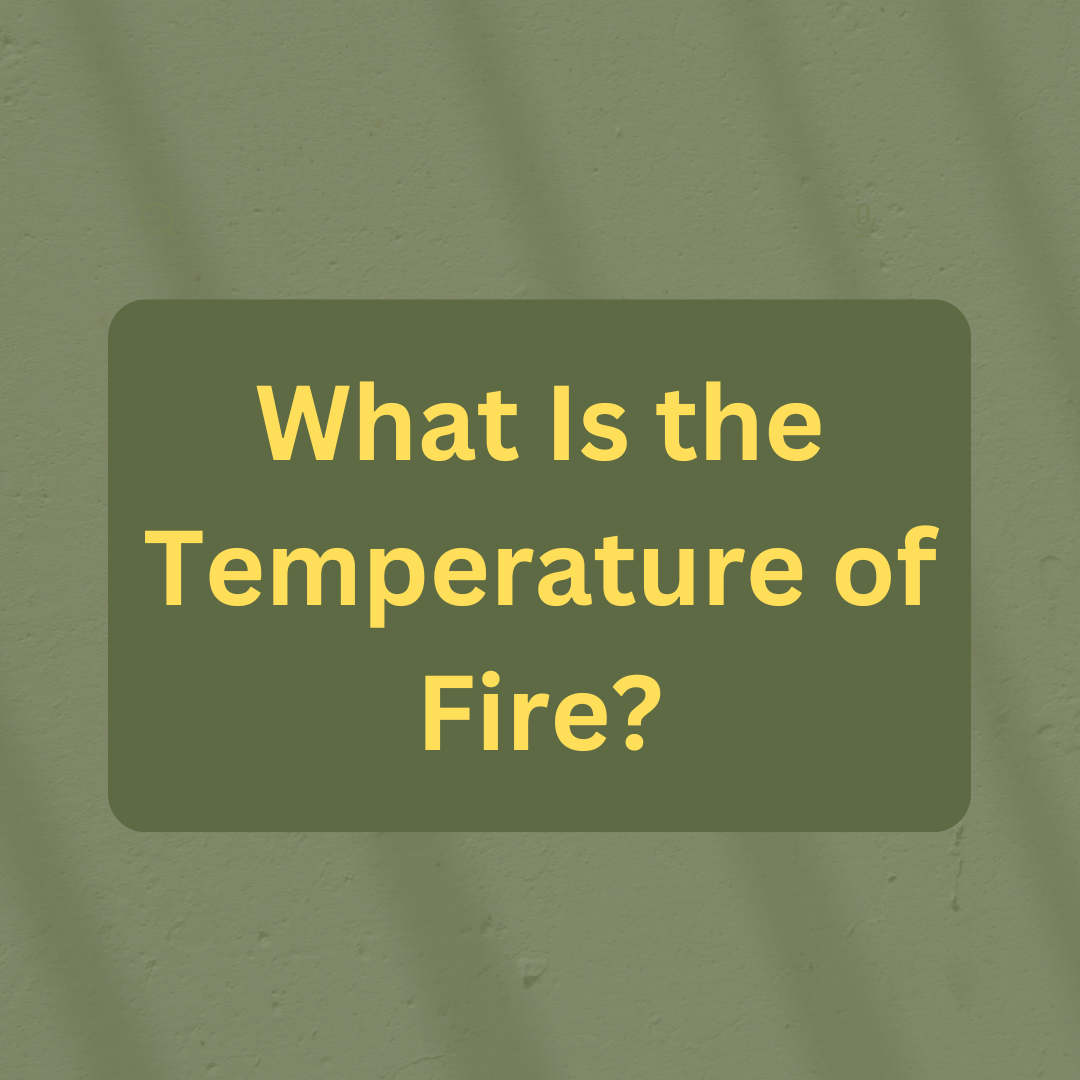
Fire is a phenomenon that has fascinated human beings since the dawn of time. It is a chemical reaction that involves the combustion of a fuel source, usually accompanied by the release of light and heat. The temperature of fire can vary greatly depending on the fuel source and the conditions under which it is burning. So what is the temperature of fire?
The temperature of fire varies depending on the type of fire and the fuel being burned. A typical wood fire can reach temperatures of around 600-900°C (1112-1652°F), while a propane or natural gas flame can reach temperatures of up to 2000°C (3632°F) or higher.
Understanding the temperature of fire is essential in many fields, including firefighting, industrial processes, and combustion science. In this context, it is important to know the factors that affect the temperature of fire, how it is measured, and its impact on the environment.
In this article, I will explain everything about the temperature of fire and its significance in various applications among other things that you should know in this topic.
Factors affecting the temperature of fire
The temperature of fire depends on several factors, including the type of fuel, the amount of fuel, the availability of oxygen, and the heat source.
Type of fuel
The type of fuel plays a significant role in determining the temperature of fire. Different fuels have different heat values, which means that they produce different amounts of heat when burned. For example, wood has a heat value of about 8,000 BTU per pound, while gasoline has a heat value of about 20,000 BTU per pound.
Amount of fuel
The amount of fuel also affects the temperature of fire. The more fuel there is, the hotter the fire will be. However, there is a limit to how much fuel a fire can consume before it reaches its maximum temperature.
Oxygen
The availability of oxygen is another critical factor that affects the temperature of fire. Oxygen is essential for the combustion process, and the more oxygen there is, the hotter the fire will burn. However, if there is too much oxygen, it can cause a rapid combustion reaction, leading to a dangerous explosion.
Heat source
This is also an important factor that affects the temperature of fire. The heat source provides the initial energy required to ignite the fuel and start the combustion process. The hotter the heat source, the hotter the fire will burn. For example, a matchstick produces a lower temperature flame than a blowtorch.
Temperature ranges of fire
The temperature of fire varies depending on the type of fire and the conditions in which it is burning. The temperature ranges of fire can be divided into three categories: low-temperature fire, medium-temperature fire, and high-temperature fire.
Low-temperature fire
A low-temperature fire is one that has a temperature range of 200 to 400 degrees Celsius. This type of fire is commonly used in cooking, such as when baking or roasting food. It produces a gentle heat that is ideal for slow cooking and allows the food to cook evenly.
Medium-temperature fire
A medium-temperature fire has a temperature range of 400 to 600 degrees Celsius. This type of fire is used for grilling and searing food, as it produces a higher heat than a low-temperature fire. It can also be used for welding and brazing metals.
High-temperature fire
A high-temperature fire has a temperature range of 600 to 1200 degrees Celsius or higher. This type of fire is commonly used in industrial processes, such as smelting and forging metals. It produces a high heat that is necessary for melting and shaping metals.
Measuring the temperature of fire
The temperature of fire can be measured using various methods, including thermocouples, pyrometers, and infrared cameras. A thermocouple is a device that measures temperature by detecting the electrical current produced by two dissimilar metals in contact with each other.
A pyrometer is a device that measures temperature by detecting the amount of infrared radiation emitted by an object. Infrared cameras are devices that detect heat energy and convert it into an image that shows the temperature distribution of an object.
Conclusion
The temperature of fire varies depending on several factors, including the type and amount of fuel, the availability of oxygen, and the heat source as I have discussed above. Therefore, it is important to know this so that you can stay informed and in the event of fire, you can know how to handle fire based on its temperature.
You May Also Like:
